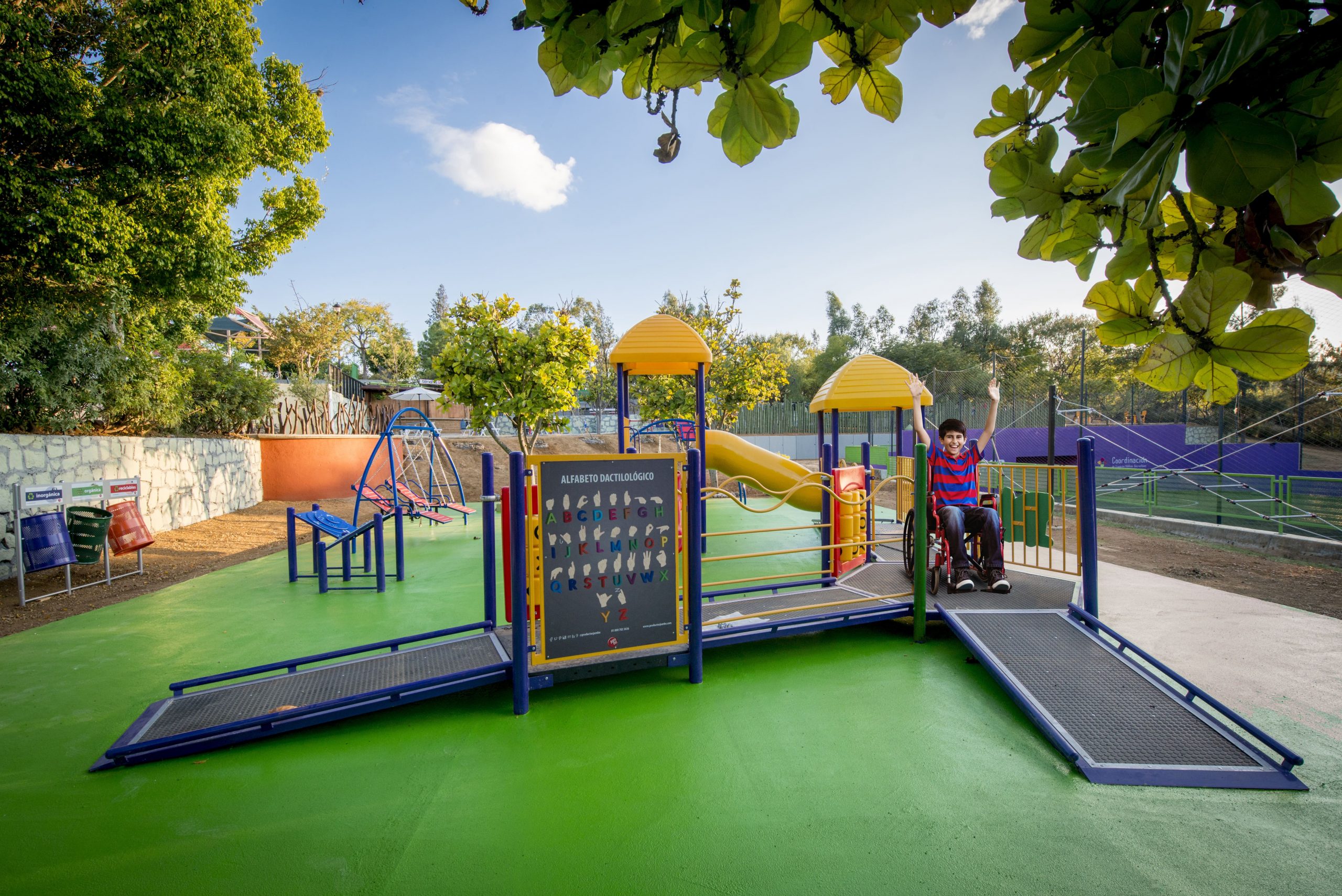
Urban equipment and inclusive playgrounds
In the trend section, Andrea Conde tells us about innovations in Urban equipment and inclusive playgrounds.
In recent years, universal accessibility has become a central theme in urban and landscape design. The search for inclusive spaces that allow the full participation of all people regardless of their abilities, has led to a significant evolution in the urban equipment and furniture used in public spaces.
“The search for inclusive spaces that allow the full participation of all people, has led to a significant evolution in the urban equipment and furniture used in public spaces.”

Murban aerial view.
Photography: Ricardo Irak
In today’s market, we can find new alternatives that can be comfortable for different types of people. An example of this are benches and tables with space for wheelchairs, as well as inclusive rehabilitation gyms for older adults. This type of equipment contributes to socialization, the sense of belonging and promotes physical activity.
For people with mobility impairment, compacted pavements such as eco-concrete, asphalt and rubber are being installed in children’s areas, these help to move around easily and safely. Also, the implementation of inclusive circuits and playground systems have been implemented, as well as seesaws, swings, and carousels with wheelchair access. This kind of playground features can help to develop the sense of space, balance, and coordination.

Podotactile floor and inclusive furniture.
Fotografía: Productos Jumbo
In recent years, musical play yards have been installed in parks, as they offer functionality and fun for a wide spectrum of people. To help those with visual disability, tactile pavements and braille signage systems are utilized. These elements allow users to orient themselves independently. In addition, it is important to use furniture in contrasting colors such as yellow, as it helps to identify an important area easily.
On the other hand, gardens with fragrant plants, with textures and sounds are being incorporated into recreational spaces, as they provide a multisensory experience to all visitors. Accessibility for kids with autism spectrum disorder (ASD), focuses on the creation of quiet spaces; natural and soft materials are used to create welcoming environments.

Colosio playground with ramp 4192.
Photography: Productos Jumbo
Regarding children’s zones, we can find interactive play panels with different textures where they can develop cognitively and, recreational areas that use water as a recreative element, always being mindful to prevent sensory overstimulation.
For kids with Down syndrome, sensory stimulation is prioritized using bright and contrasting colors that stimulate visual interest. Also, playful elements that promote cognitive and motor development are incorporated.

Sensory tunnel.
Photography: pexels-ben-muk
Sensorial tunnels are an example of this, as they help to improve body awareness. Playground equipment’s that incorporate lighting can stimulate the senses and enhance concentration. In addition, they offer exceptional versatility, making them suitable for other groups including those with hearing disabilities.
In summary, trends in inclusive access are evolving to create environments that meet the needs of people with diverse abilities. The design of urban elements plays a crucial role in creating outdoor spaces so they can be accessible, safe and attractive for all.

Sensory pillar.
Photography: Productos Jumbo
These innovations not only improve the quality of life, but also enrich the experience of all users, promoting diversity and equality in society.
“Trends in inclusive access are evolving to create environments that meet the needs of people with diverse abilities.”

Boat.
Photography: Productos Jumbo











